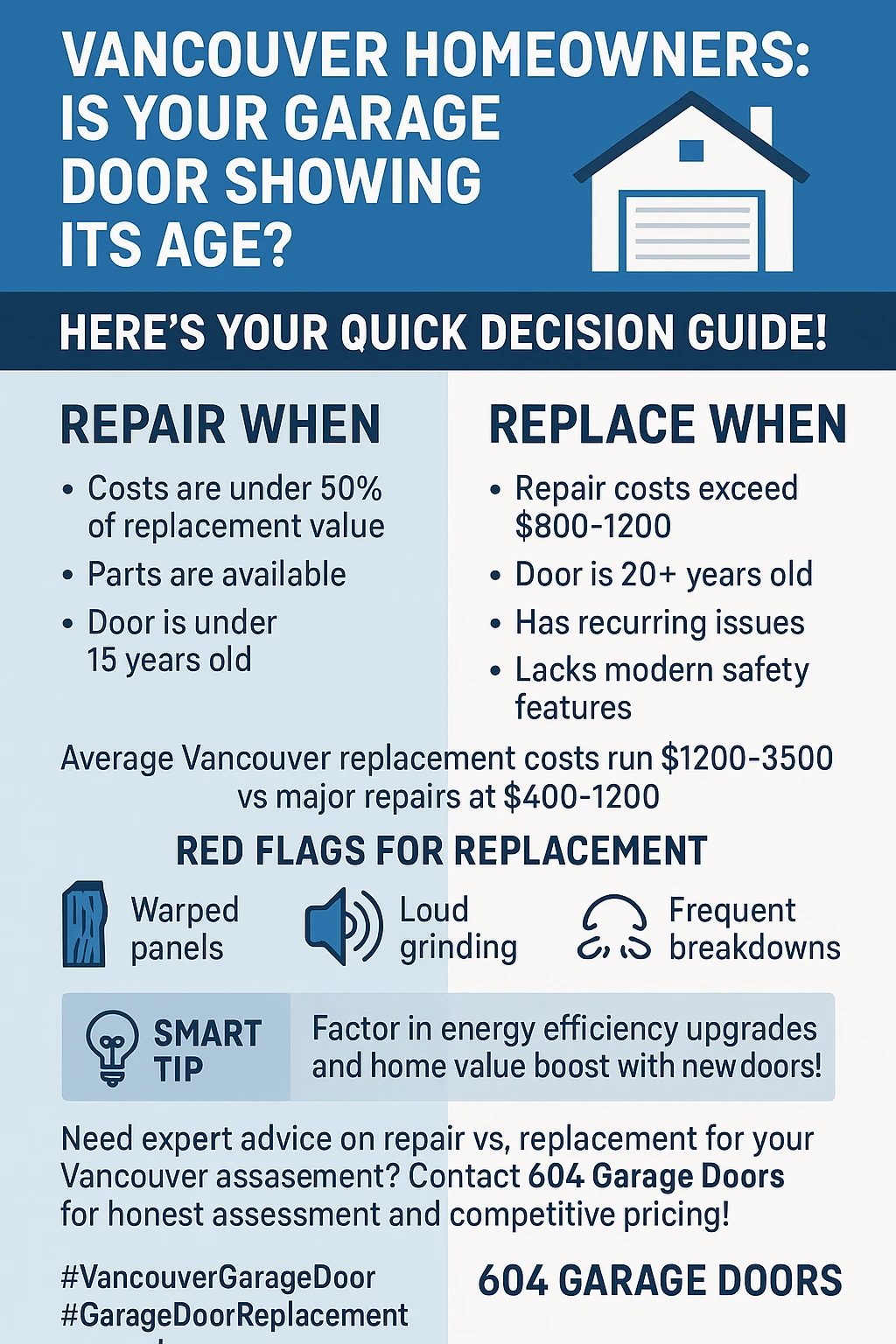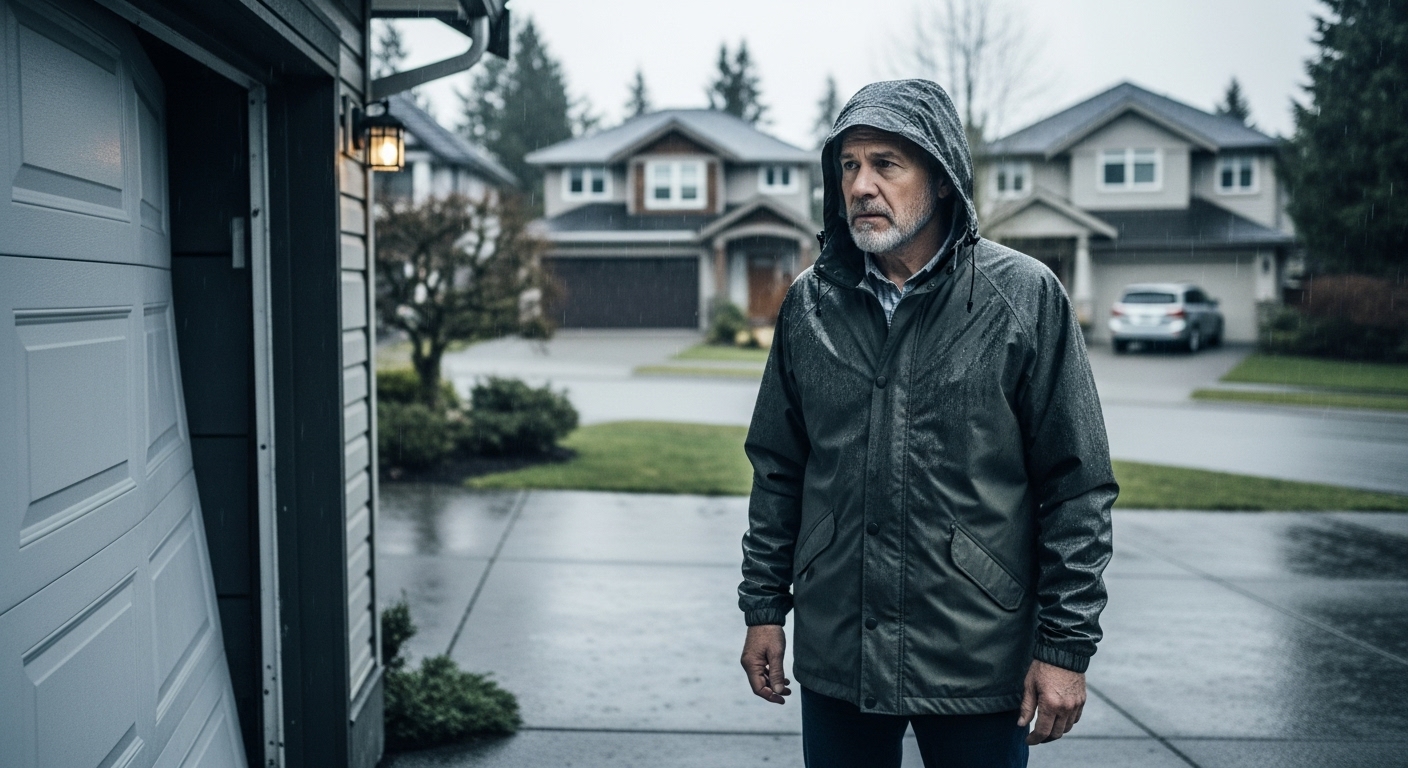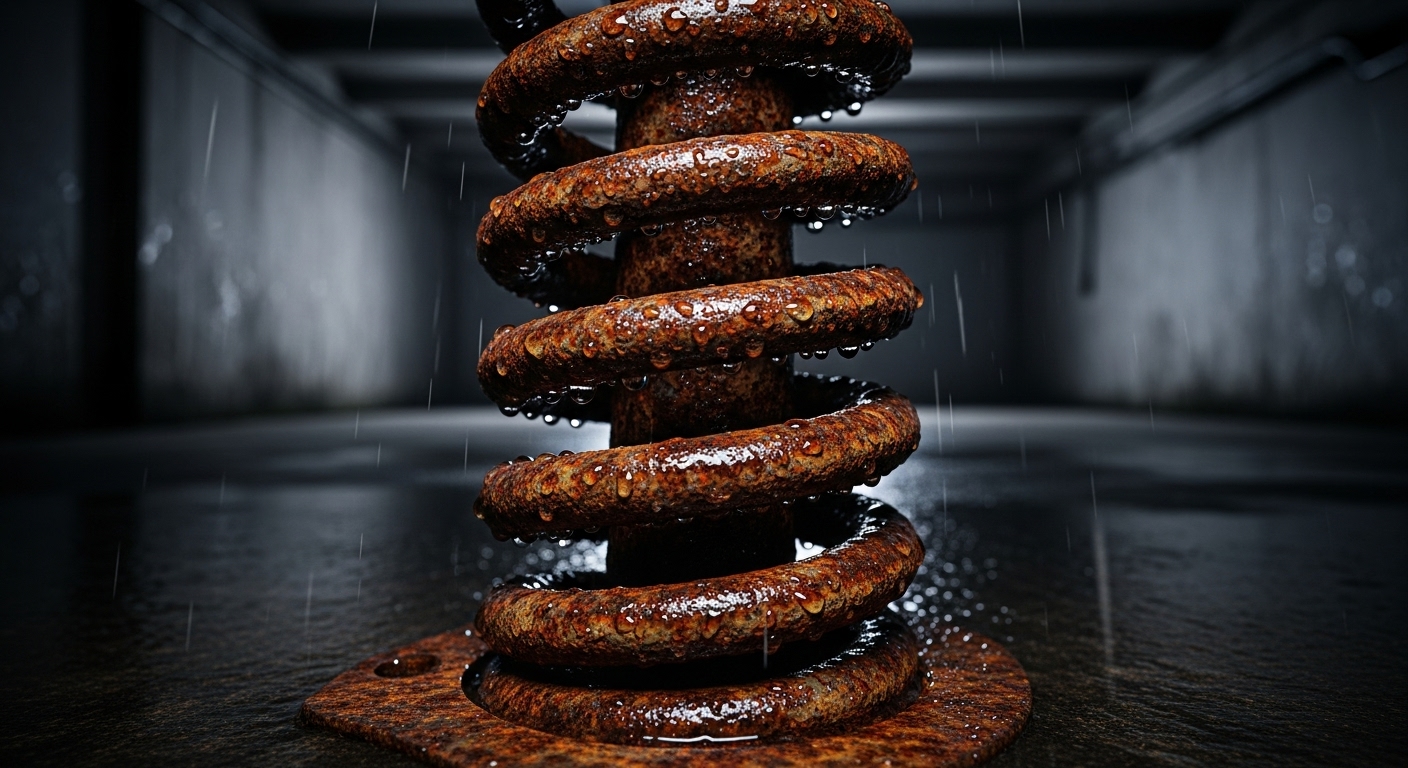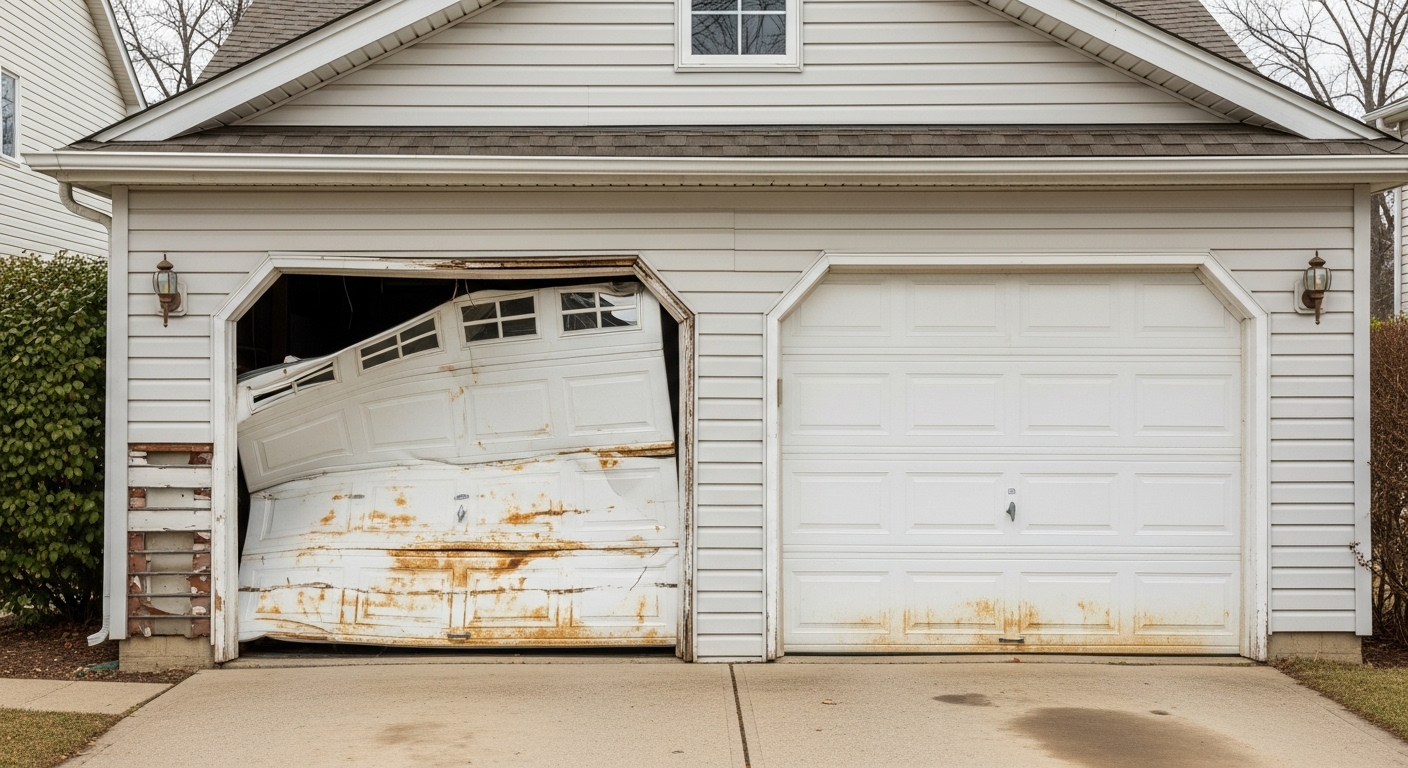How to Tell if Your Vancouver Garage Door Needs Replacement vs Major Repairs: Cost Comparison and Decision Guide for Smart Homeowners
Staring at your garage door wondering if that weird grinding noise means you’re looking at a quick fix or a major wallet hit? We’re about to break down exactly how to tell whether your Vancouver garage door needs some TLC or if it’s time to rip the band-aid off and go for a full replacement!
Picture this: you’re rushing out the door for work, hit that garage remote, and instead of the smooth whoosh you’re used to, your door sounds like it’s auditioning for a horror movie soundtrack. Been there, right? As someone who’s helped countless Vancouver homeowners navigate this exact scenario, I can tell you that figuring out whether to repair or replace your garage door doesn’t have to be rocket science. The thing is, Vancouver’s crazy wet weather throws some unique curveballs that homeowners in dry climates never deal with. Between our epic rainfall, those sneaky freeze-thaw cycles, and humidity that makes metal components rust faster than you can say “West Coast living,” our garage doors face some serious challenges.
Here’s the deal: your garage door is basically the hardest-working part of your home that you probably never think about. Most of us open and close that sucker three to five times a day without giving it a second thought, until something goes wrong. Then suddenly you’re frantically googling “garage door repair Vancouver” at 11 PM because you can’t get your car out of the garage. The good news? There’s actually a pretty straightforward framework for making this decision, and it’s not just about throwing money at the problem or crossing your fingers and hoping for the best.
The reality is that garage doors in our neck of the woods typically last anywhere from fifteen to thirty years, but Vancouver’s moisture-heavy environment can definitely mess with that timeline. When you factor in our mild but persistent rain, occasional ice storms, and the fact that metal components basically live in a sauna for half the year, things get interesting. Understanding when you’re dealing with a simple fix versus a system that’s about to cascade into multiple failures can save you serious cash and prevent those nightmare scenarios where you’re stuck with a door that won’t budge.
Key Outtakes:
- Use the 50% rule: if repair costs exceed half of replacement cost, replacement typically offers better long-term value
- Vancouver’s maritime climate accelerates rust and component wear, often shortening garage door lifespan by 5-7 years compared to drier regions
- Garage door replacement delivers 193-268% return on investment when selling homes, making it one of the highest-ROI home improvements
- Multiple component failures within 2-3 years indicate cascading system deterioration, strongly favoring replacement over continued repairs
- Smart garage door systems with WiFi connectivity and security features cannot be retrofitted effectively to older systems

Understanding Your Garage Door’s Lifespan in Vancouver’s Climate
Let me start with some real talk about garage door lifespans, because this is where a lot of homeowners get tripped up. Most garage doors are designed to handle between 10,000 and 20,000 cycles before major components start giving out. Now, a cycle is basically one complete open-and-close operation, so if you’re like most Vancouver families doing the morning coffee run, work commute, evening activities, and weekend errands routine, you’re probably looking at about 1,000 to 1,800 cycles per year. Do the math, and you’re looking at roughly 10 to 15 years before your springs start getting cranky.

But here’s where Vancouver throws us a curveball that homeowners in places like Calgary or Phoenix don’t deal with. Our maritime climate is basically kryptonite for garage door components. We’re talking about an average of 1,600 millimeters of rain annually, most of it concentrated in those dreary fall and winter months when everything feels soggy. This constant moisture exposure is like putting your garage door through an accelerated aging program. Steel components that might last 20 years in Arizona could need replacement in 12-15 years here, simply because rust and corrosion are working overtime.
The springs are usually the first domino to fall, and in Vancouver’s climate, they face some unique challenges. Cold weather makes metal springs more brittle, while our wet conditions accelerate corrosion of the spring coating. Temperature fluctuations during our transitional seasons create expansion and contraction cycles that stress the metal beyond what manufacturers typically test for. I’ve seen perfectly good springs snap during those weird February warm spells we get, simply because the rapid temperature change pushed aged metal past its tolerance point.

Your garage door opener is the next component that typically waves the white flag, usually after about 10-15 years of faithful service. But again, Vancouver’s environment plays havoc here too. The high humidity can mess with electrical connections, while temperature swings affect the lubricants and moving parts inside the opener motor. Those plastic gears inside the opener? They get brittle faster in our climate, especially if your garage isn’t heated. When you start hearing grinding noises from the opener, that’s usually those plastic components giving up the ghost.
Then there’s all the supporting cast – rollers, hinges, tracks, cables, and weather sealing. Each of these components has its own lifespan, but they’re all interconnected. When one starts failing, it puts extra stress on the others. This is why you’ll sometimes see homeowners get hit with multiple repair needs in rapid succession. Your springs go, putting extra strain on your opener. Your opener starts working harder, wearing out the rollers. The worn rollers create more friction, stressing the tracks. It’s like a mechanical domino effect that can turn your garage door from “mostly fine” to “completely shot” in the span of a year.
Red Flags That Scream “Time for Replacement”
Okay, let’s talk about the warning signs that your garage door is basically sending you an SOS signal. As someone who’s diagnosed hundreds of garage door problems around Vancouver, I can tell you there are some pretty clear indicators that you’re looking at replacement territory rather than repair-and-pray situation. Learning to recognize these signs early can save you from those expensive emergency service calls and help you plan your replacement on your timeline, not your garage door’s.
The first major red flag is what I call the “death rattle” – those sounds that make you wince every time you hit the opener button. Normal garage door operation should clock in around 60-70 decibels, basically the sound level of moderate background noise. If your door sounds like it’s grinding coffee beans, dragging chains, or making popping noises, that’s your cue to pay attention. Grinding and scraping sounds usually indicate worn rollers or damaged tracks, while sharp popping or banging sounds often mean spring failure is imminent or has already happened.
Here’s the thing about spring failure – it’s not subtle. When a torsion spring snaps, it sounds like a gunshot going off in your garage. If you hear that distinctive BANG, do not attempt to operate your door. A broken spring means your opener is trying to lift the entire weight of the door by itself, which can burn out the motor and create serious safety hazards. I’ve seen garage doors with broken springs come crashing down unexpectedly, and trust me, you don’t want to be anywhere near when that happens.
Visual cues are just as telling as auditory ones. If your garage door looks like it’s doing yoga poses it wasn’t designed for – sagging on one side, gaps between panels, or that telltale “banana curve” where the whole door bows – you’re looking at structural issues that go beyond simple repairs. Door balance problems usually indicate spring issues, but they can also signal problems with the track system, cables, or even the door frame itself. An unbalanced door puts tremendous stress on your opener motor and creates safety risks, especially if you have kids or pets who might be in the garage when the door decides to misbehave.

Panel damage is another category where you need to think strategically rather than just reactively. Sure, you can replace individual panels, and sometimes that makes perfect sense. But if you’re looking at damage to three or more panels, or if the remaining panels are showing their age with rust, dents, or weathering, you’re often better off replacing the whole system. Panel replacement costs can escalate quickly, especially when you factor in labor for multiple service calls and the challenge of finding exact matches for discontinue


